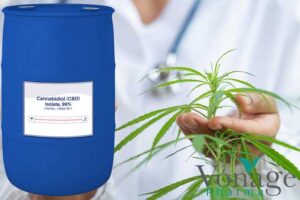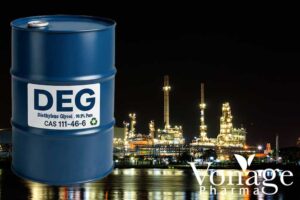Pharmaceutical sourcing professionals are constantly seeking reliable, cost-effective sources for essential medicines. Among legacy pharmaceuticals, tincture of opium holds a unique position due to its specialized medical applications and regulatory complexity. Understanding the tincture of opium price is vital for pharma sourcing teams aiming to balance budget constraints, regulatory requirements, and patient needs. This article explores the latest statistics, historical trends, and influencing factors behind the tincture of opium price, offering actionable insights for pharmaceutical buyers and procurement specialists.
What is Tincture of Opium?
Tincture of opium, also known as laudanum, is an alcoholic solution containing opium alkaloids, primarily morphine, with smaller amounts of codeine and other compounds. Despite the development of modern synthetic opioids, tincture of opium remains in use for specific indications, such as the management of severe, refractory diarrhea, especially in palliative care and certain chronic conditions. Its status as a controlled substance means its availability and price are influenced by a range of unique factors.
The Importance of Tincture of Opium in Modern Medicine
While the use of tincture of opium has declined with the advent of newer medications, it remains indispensable in certain clinical scenarios. For example, it is often prescribed when other anti-diarrheal agents fail, particularly in cases of chronic diarrhea associated with short bowel syndrome or as a last-resort therapy in palliative care. Its effectiveness, however, is balanced by strict regulations, which play a significant role in shaping the tincture of opium price and its sourcing landscape.
Global Market Overview: Tincture of Opium Price Trends
Production and Demand Statistics
Globally, the demand for tincture of opium is relatively stable but limited, reflecting its niche use. According to recent pharmaceutical market reports, the annual production volume for tincture of opium is significantly lower than for mainstream opioid medications. Fewer than a dozen manufacturers worldwide are licensed to produce pharmaceutical-grade tincture of opium, with most production concentrated in countries with established opiate processing industries.
Supply Chain and Availability
The supply chain for tincture of opium is complex, involving multiple regulatory checkpoints from raw opium procurement to finished product distribution. This complexity is a major driver of the tincture of opium price. Supply chain disruptions- whether due to regulatory changes, raw material shortages, or logistical challenges lead to temporary price spikes or supply shortages.
Historical Pricing Trends
Historically, tincture of opium was widely available and relatively inexpensive. However, over the past several decades, prices have increased steadily. This trend is attributed to:
- Stricter international and national regulations on opiate production and distribution
- Increased costs for compliance, security, and documentation
- Reduced competition as fewer manufacturers remain in the market
- Rising costs for raw opium and ethanol, both of which are tightly regulated commodities
Key Factors Influencing the Tincture of Opium Price
-
Regulatory Compliance
Tincture of opium is classified as a controlled substance in most countries. Compliance with regulations governing its manufacture, storage, distribution, and prescription is rigorous and costly. These regulatory burdens are reflected in the final price paid by pharmaceutical buyers.
-
Raw Material Costs
The cost of raw opium closely determines the price of tincture of opium. International treaties tightly control global opium production, and fluctuations in harvest yields, geopolitical events, or changes in licensing can affect its availability and price. Additionally, the ethanol used as a solvent is subject to excise taxes and purity standards, further affecting production costs.
-
Manufacturing Scale
Manufacturers produce tincture of opium in relatively small batches, unlike high-volume pharmaceuticals. Smaller production runs mean higher per-unit costs due to less efficient economies of scale. Manufacturers must also invest in specialized equipment and secure facilities, which increases overhead.
-
Distribution and Storage
Controlled substances require secure storage and transportation, with detailed record-keeping at every stage. Distributors must comply with strict chain-of-custody protocols, adding further logistical expenses that influence the tincture of opium price.
-
Market Competition
Since only a handful of manufacturers produce tincture of opium globally, limited competition exists. This lack of competition can lead to price rigidity, as buyers have few alternative sources.
Statistical Insights: Tincture of Opium Price Variability
Recent market analyses indicate that the tincture of opium price can vary significantly based on several factors:
- Geographical Region: Prices tend to be higher in countries with more stringent regulations or limited domestic production. In contrast, regions with established opiate processing industries may offer more competitive pricing.
- Batch Size: Larger bulk orders typically secure better per-unit pricing, while small or emergency orders may incur premium charges.
- Supply Chain Stability: Periods of supply chain disruption, such as during global health emergencies or regulatory changes, have historically led to temporary price increases.
- Regulatory Fees: In some markets, additional fees for import permits, quality testing, and documentation can add a significant premium to the base price.
For pharma sourcing teams, tracking these variables is essential for budgeting and procurement planning.
Procurement Strategies for Optimizing Tincture of Opium Price
-
Establish Long-Term Supplier Relationships
Building strong, long-term relationships with licensed manufacturers and distributors can help secure more stable pricing and priority access during periods of limited supply.
-
Monitor Regulatory Developments
Staying informed about changes in national and international regulations can help anticipate potential price fluctuations or supply disruptions, allowing for proactive procurement planning.
-
Leverage Bulk Purchasing
Whenever possible, consolidating orders or coordinating with other departments or institutions to place larger bulk orders can result in more favorable pricing.
-
Diversify Supply Sources
While the market may offer limited options, businesses can actively explore multiple suppliers or regions to mitigate risks from supply chain disruptions or price spikes.
-
Maintain Transparent Documentation
Ensuring that all regulatory and quality documentation is in order can prevent costly delays and additional fees, which can otherwise inflate the overall tincture of opium price.
The Future Outlook: Tincture of Opium Price in a Changing Market
Looking ahead, experts expect the tincture of opium price to stay stable but rise above historical norms. Factors such as ongoing regulatory scrutiny, evolving pharmaceutical standards, and the persistent need for specialized medications will continue to shape the market. Advances in supply chain technology and potential regulatory harmonization may offer opportunities for modest cost reductions in the future.
Conclusion
Understanding the tincture of opium price is essential for pharmaceutical sourcing professionals tasked with balancing cost, compliance, and patient care. By analyzing market statistics, recognizing key price drivers, and adopting strategic procurement practices, pharma buyers can ensure a reliable and cost-effective supply of this vital medication. As the market evolves, staying informed and proactive will remain the cornerstone of successful pharma sourcing.







